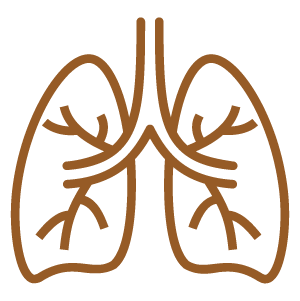Barrett, B., Brown, R., Rakel, D., Mundt, M., Bone, K., Barlow, S., & Ewers, T. (2010). Echinacea for treating the common cold: A randomized trial. Annals of Internal Medicine, 153(12), 769-777. https://doi.org/10.7326/0003-4819-153-12-201012210-00003
Büsing, K. H. (1952). Hyaluronidase inhibition by Echinacin. Arzneimittel-Forschung, 2(6), 467-469.
Buhner, S. (2012). Herbal antibiotics: Natural alternatives for treating drug-resistant bacteria. Storey Publishing.
Goel, V., Lovlin, R., Chang, C., Slama, J. V., Barton, R., Gahler, R., Bauer, R., Goonewardene, L., & Basu, T. K. (2005). A proprietary extract from the echinacea plant (Echinacea purpurea) enhances systemic immune response during a common cold. Phytotherapy Research, 19(8), 689-694. https://doi.org/10.1002/ptr.1733
McIntyre, A. (2019). The complete herbal tutor. Aeon Books.
Mills, S., & Bone, K. (2013). Principles and practice of phytotherapy (2nd ed.). Elsevier.
Müller-Jakic, B., Breu, W., Pröbstle, A., Redl, K., Greger, H., & Bauer, R. (1994). In vitro inhibition of cyclooxygenase and 5-lipoxygenase by alkamides from Echinacea and Achillea species. Planta Medica, 60(1), 37-40. https://doi.org/10.1055/s-2006-959404
Roesler, J., Emmendörffer, A., Steinmüller, C., Luettig, B., Wagner, H., & Lohmann-Matthes, M. L. (1991). Application of purified polysaccharides from cell cultures of the plant Echinacea purpurea to test subjects mediates activation of the phagocyte system. International Journal of Immunopharmacology, 13(7), 931-941. https://doi.org/10.1016/0192-0561(91)90046-a
Schöneberger, D. (1992). The influence of immune-stimulating effects of pressed juice from Echinacea purpurea on the course and severity of colds. Forum Immunologie, 8, 2–12.
Taylor, J. A., Weber, W., Standish, L., Quinn, H., Goesling, J., McGann, M., & Calabrese, C. (2003). Efficacy and safety of echinacea in treating upper respiratory tract infections in children: A randomized controlled trial. JAMA, 290(21), 2824-2830. https://doi.org/10.1001/jama.290.21.2824
Viehmann, P. (1978). Results of treatment with an echinacea-based ointment. Erfahrungsheilkunde, 27(5), 353-358.
Wagner, H., Stuppner, H., Schäfer, W., & Zenk, M. (1988). Immunologically active polysaccharides of Echinacea purpurea cell cultures. Phytochemistry, 27(1), 119-126. https://doi.org/10.1016/0031-9422(88)80601-0
World Health Organization. (1999). WHO monographs on selected medicinal plants: Volume 1. World Health Organization. https://iris.who.int/bitstream/handle/10665/42052/9241545178.pdf















